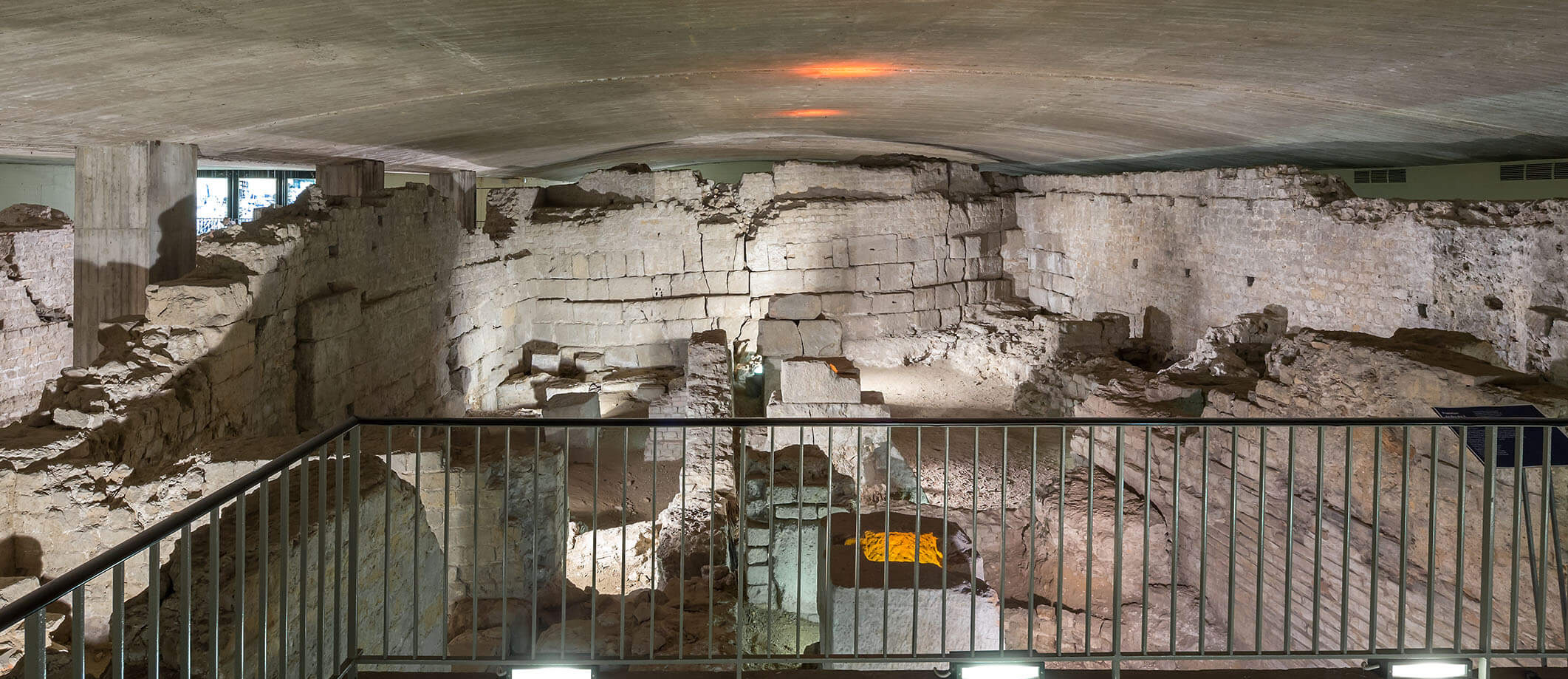Köln-Mitte

In the early 1st century AD the headquarters of the Lower Germanic Roman army occupied the area around what is now Cologne’s city hall. Towards the end of the century, this was the location of the praetorium, the residence of Lower Germany’s governor. It is the largest and best researched Roman structure along the Rhine. We now know that it was constructed in four phases. Its stone remains are in remarkably good condition. Having been located in what was effectively an underground museum, these ancient ruins are now the centrepiece of the new MiQua. LVR Jewish Museum in the Archaeological Quarter of Cologne.
Access: public
Note: The archaeological remains that make up the Lower Germanic Limes (NGL) UNESCO World Heritage Site are all very well preserved. Most of these structures are buried underground and well protected. Some are visible above ground. So far, there is very little on-site information explaining the history and significance of these finds. We are currently working on a comprehensive package of information and presentation resources to promote public understanding of these sites.
